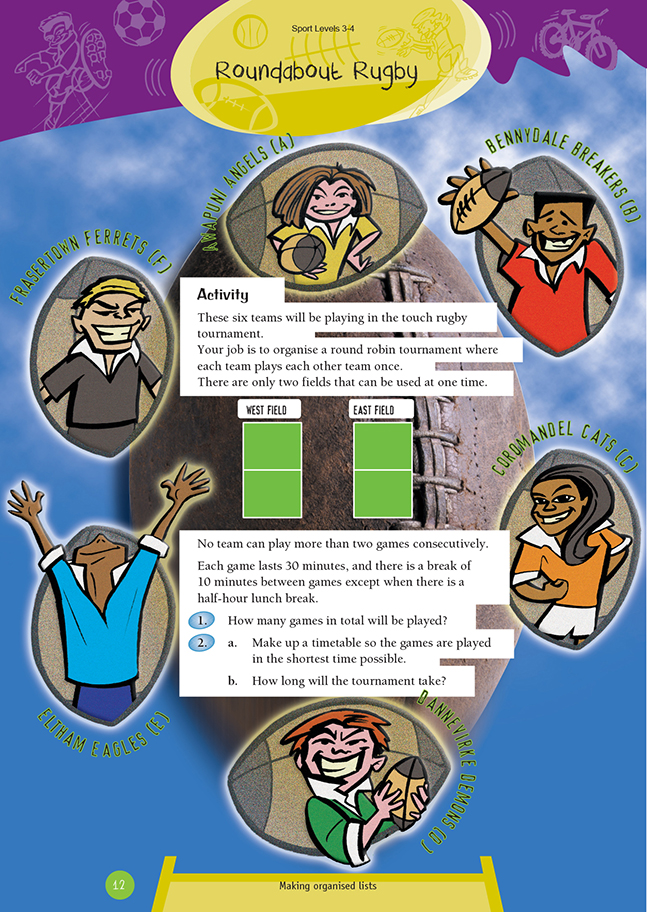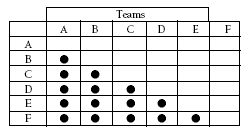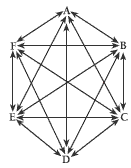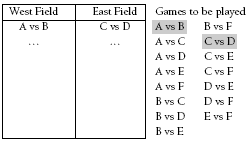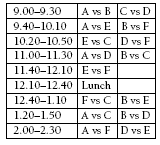This is a level 4 probability and measurement activity from the Figure It Out theme series.
Click on the image to enlarge it. Click again to close. Download PDF (444 KB)
find all possible combinations for a round robin tournament
create a timetable
FIO, Levels 3-4, Theme: Sport, Roundabout Rugby, page 12
The students first need to establish which games need to be played, given the condition that each team plays each other team only once.
Below are some ways of doing this.
An arrow diagram:
An organised list:
AB, AC, AD, AE, AF, BC, BD, BE, BF, CD, CE, CF, DE, DF, EF.
All of these methods reveal that 15 games must be played. The students can also use multiplication to work out the total number of games. There are six teams. Each team plays each other team once, so each team will play five games. Six teams playing five games is 6 x 5 = 30 games. But this counts each game twice (it counts the Cats playing the Eagles and the Eagles playing the Cats, but this is actually only one game), so half of 30 is the number of games played: 30 ÷ 2 = 15 games.
The students then need to make up a timetable in which no team has more than two consecutive games. A table is a useful way to do this.
The students will need to work systematically to ensure that their draw meets all the requirements. Many different draws are possible. The students will not always be able to have a game on both fields at the same time. The minimum time is eight games of 30 minutes, a 30 minute lunch break, and six 10 minute breaks between games. This is a total of 330 minutes or 51/2 hours.
Answers to Activity
1. 15 games
2. a. A suggested timetable could be:
Many other draws are possible.
b. This would take a total of 5 hours 30 minutes (51/2 hours), the minimum possible
time.
